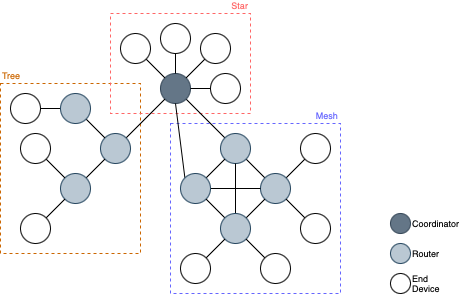Zigbee is a network protocol that is designed to create low-powered networks. A Zigbee network consists of three main devices; A controller, router and end devices.

A Zigbee network can only have one coordinator. Depending on your network structure, end devices can be paired directly with the coordinator creating a star formation, or end devices can be configured through routers in either a tree or mesh network.
Power efficient end device
End devices can only communicate through their parent node. A very-low powered end device, is often called a sleepy end device. Sleepy end devices turn off their radio when idle to save power. These devices will not receive broadcasted messages from other devices. They will need to poll their parent for information.
For a end device to keep its relationship with its parent, it is required to send a poll message atleast once within a end device aging timeout, which can range from 10 seconds to 11 days. If the parent doesn’t receive a keep-alive command from the child, the parent will assume that the child has been lost.
Sources
[1] : Zigbee specification